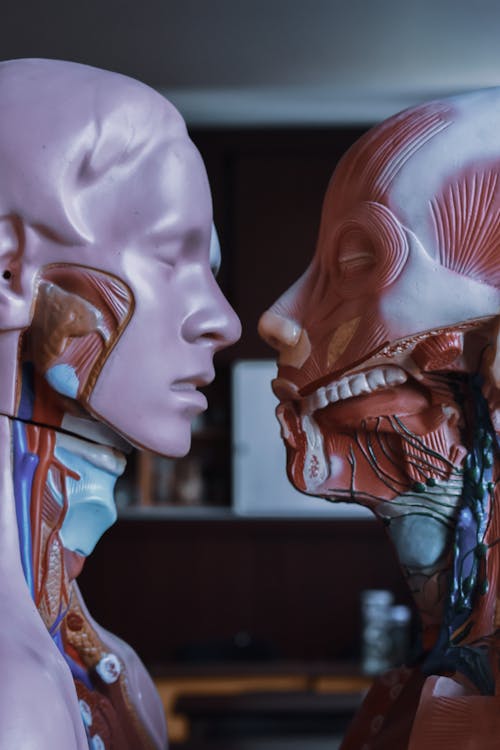Human Organs And Their Functionalities All You Need To Know-Part 1
Human Organs And Their Functionalities Part 1:
Brain - The brain is the control center of the body and is responsible for regulating consciousness, movement, sensation, thought, and memory.
 |
| Human Organs And Their Functionalities |
Heart - The heart is a muscular organ that pumps blood to the body. Blood carries oxygen and nutrients to the body's cells and helps to remove waste products.
Lungs - The lungs are responsible for exchanging oxygen and carbon dioxide in the body. Oxygen is taken in from the air we breathe and carbon dioxide is expelled.
Liver - The liver is a vital organ that performs many important functions, including the regulation of chemicals in the blood, the production of bile, and the metabolism of drugs and other substances.
Stomach - The stomach is a muscular sac that mixes and grinds food with gastric juices. This helps to break down food into a liquid form called chyme, which is then passed into the small intestine for further digestion.
Small Intestine - The small intestine is where most of the digestion and absorption of nutrients takes place. The walls of the small intestine are lined with tiny finger-like projections called villi, which help to increase the surface area for absorption.
Kidneys - The kidneys are two bean-shaped organs located on either side of the spine. They filter waste products from the blood and regulate the balance of fluids and electrolytes in the body.
Skeletal System - The skeletal system consists of bones, joints, and cartilage. It provides the framework for the body and protects vital organs, as well as allowing for movement through the muscles attached to the bones.
Muscles - The muscles are responsible for movement and the maintenance of posture. They are divided into three types: skeletal, smooth, and cardiac.
Nervous System - The nervous system is the body's electrical wiring, transmitting signals from the brain to the rest of the body and back again. It controls sensation, movement, and thought, and helps to regulate various functions such as heart rate, digestion, and breathing.
Eyeballs - The eyeballs are spherical structures located in the eye sockets of the skull. They contain the retina, which is responsible for detecting light and sending signals to the brain to form images.
Ears - The ears are responsible for the sense of hearing, as well as balance. Sound waves are funneled into the ear canal and reach the eardrum, which vibrates and sends signals to the brain.
Nose - The nose is responsible for the sense of smell and helps to filter and warm incoming air. The olfactory receptors in the nose are responsible for detecting different odors.
Mouth - The mouth is responsible for the sense of taste and is also used for speaking, chewing, and swallowing. Saliva is produced in the mouth to help break down food, and the teeth are used for biting and grinding.
Throat - The throat, or pharynx, is a muscular tube that connects the mouth and nose to the esophagus and larynx. It is used for both breathing and swallowing, and the larynx, or voice box, is also responsible for producing sound for speech.
Skin - The skin is the largest organ of the body and acts as a barrier to the external environment. It protects against physical injury, dehydration, and infection, and is also responsible for regulating body temperature.
Read More : Top 5 Best Yoga For Cure Piles
Pancreas - The pancreas is a gland located behind the stomach that produces hormones, including insulin, which regulates blood sugar levels, and digestive enzymes that break down food in the small intestine.
Spleen - The spleen is a small organ located in the upper left side of the abdomen. It acts as a filter for the blood, removing old or damaged red blood cells and producing white blood cells.
Adrenal Glands - The adrenal glands are two small glands located on top of the kidneys. They produce hormones that regulate metabolism, blood pressure, and the body's response to stress.
Reproductive System - The reproductive system consists of the male testes and the female ovaries, as well as the associated organs for producing, transporting, and fertilizing eggs and sperm. The male reproductive system produces and transports sperm, while the female reproductive system produces eggs, provides a nurturing environment for the developing fetus, and gives birth.
To Be Continued In Part 2!
FAQ:
Question1 : What are the 11 different organ systems and their function?
Ans: The 11 organ systems include the integumentary system, skeletal system, muscular system, lymphatic system, respiratory system, digestive system, nervous system, endocrine system, cardiovascular system, urinary system, and reproductive systems.
Question2 : What are the 4 main functions of the heart?
Ans: Its significant role is to pump blood throughout the body.
Enables transport of oxygen-rich blood to all components of the body.
Helps regulate adequate blood pressure throughout the body.
Transfers nutrients to cells, tissues, and all parts of the body.
Question3: What are the 3 most important organs?
Ans : Heart: located in the center of the chest, and its function is to keep blood flowing through the body.
Brain: located in the head and functions as the body's control center.
Kidney: The two kidneys are located in the back of the abdomen on either side of the body.